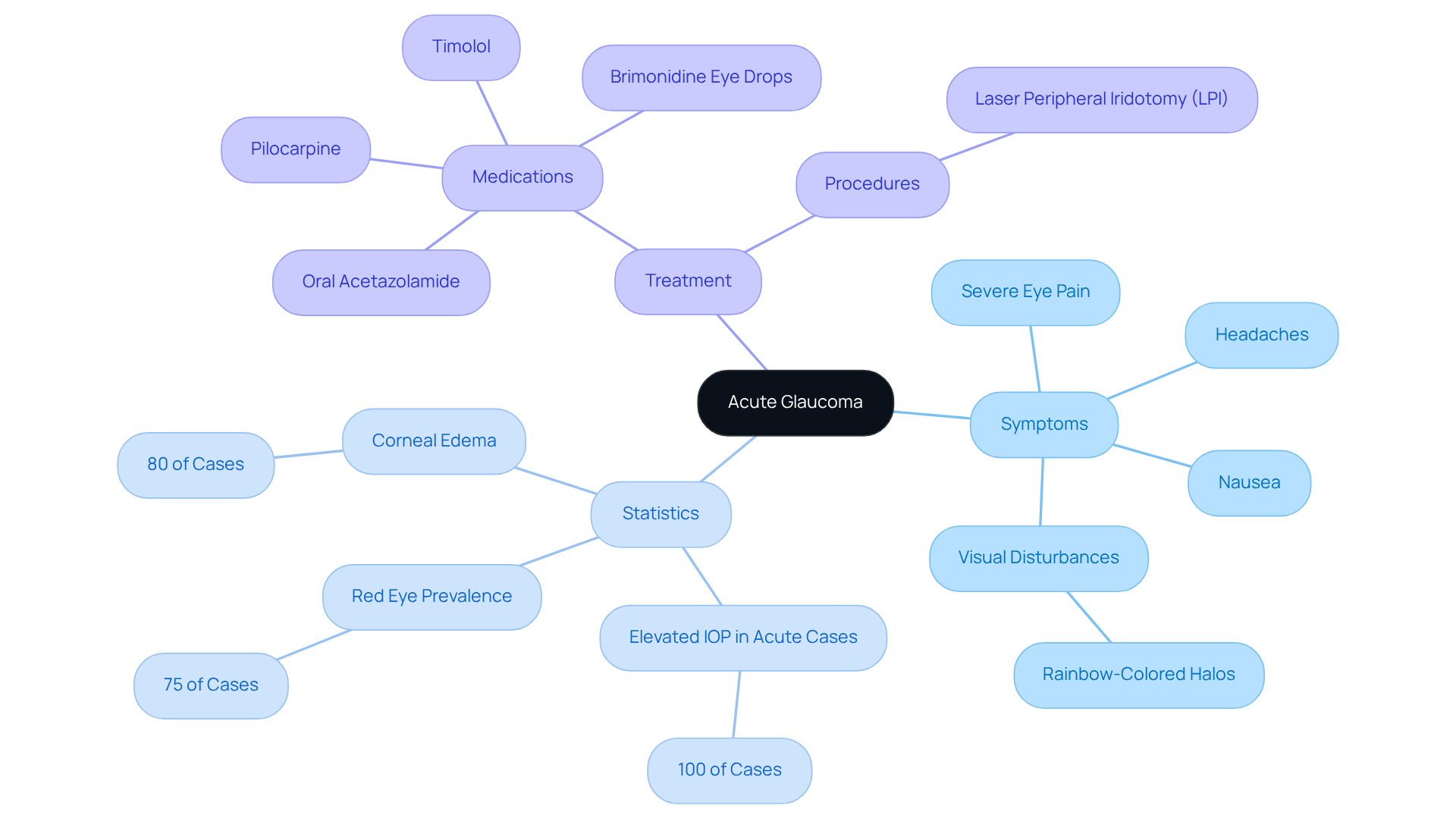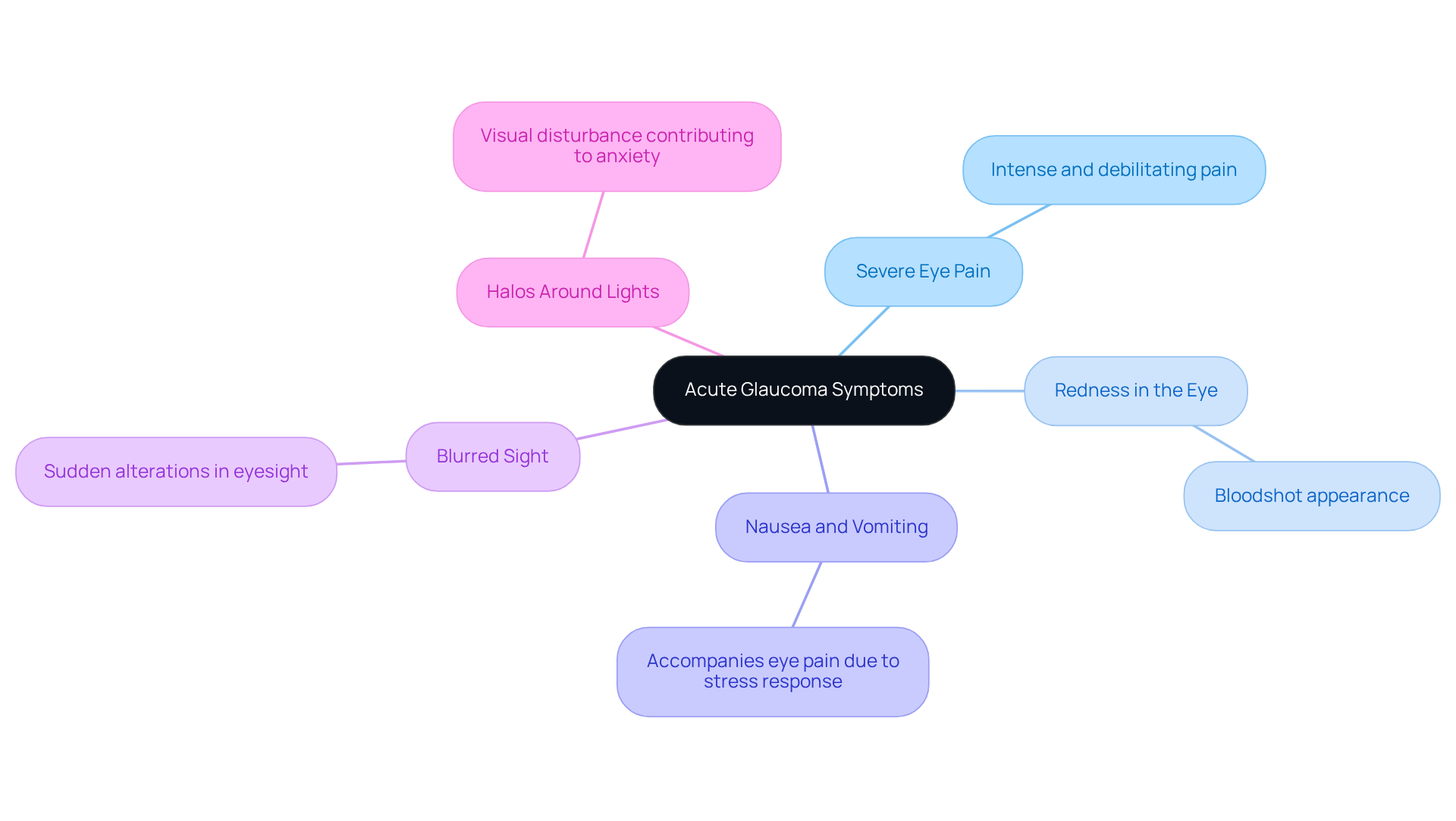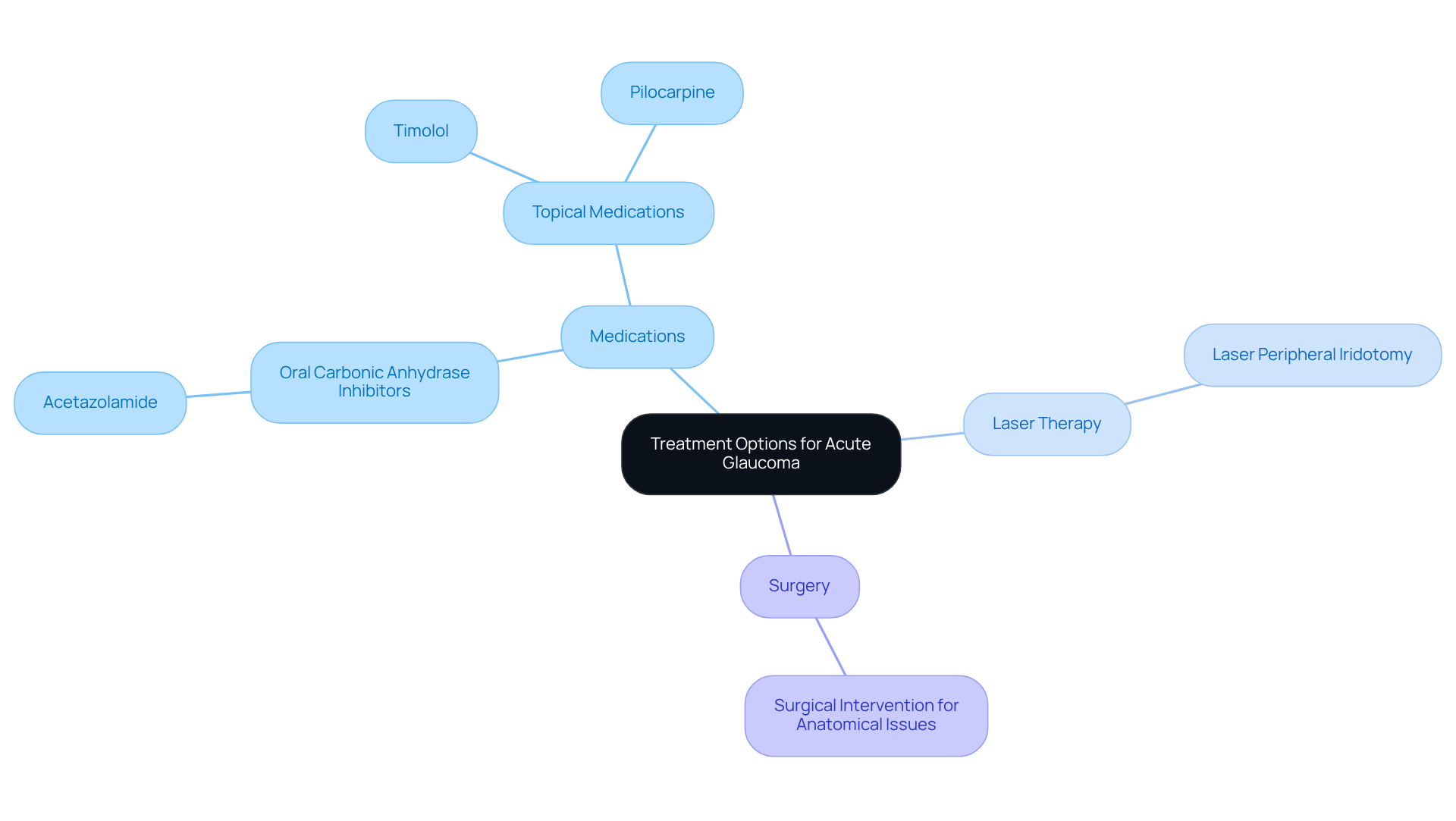Posted by: Northwest Eye in General on October 13, 2025
Overview
Acute glaucoma can be a frightening experience, as it involves a rapid increase in intraocular pressure. This can lead to severe symptoms, including intense eye pain, nausea, and visual disturbances. We understand that these symptoms can be alarming, and it’s crucial to seek immediate medical attention.
Timely treatment options are available, and they can make a significant difference in your recovery. Medications and laser therapy are effective ways to manage this condition and prevent irreversible damage to your vision. It’s common to feel overwhelmed, but please know that you are not alone in this.
We are here to help you through this process. Remember, the sooner you seek care, the better your chances are for a positive outcome. Your vision is important, and addressing acute glaucoma promptly can provide reassurance and peace of mind.
Introduction
Acute glaucoma poses a serious threat to vision, often appearing suddenly and requiring immediate attention. This eye condition is marked by a rapid rise in intraocular pressure, which can lead to symptoms ranging from intense pain to visual disturbances.
We understand how alarming this can be, and it’s crucial to recognize the critical signs and explore effective treatment options to protect your sight.
But what should you do when these symptoms catch you off guard, and how can you navigate the urgent need for care?
Define Acute Glaucoma: Understanding the Condition
Acute glaucoma is a serious eye condition that can be alarming. It occurs when there is a rapid increase in intraocular pressure (IOP) due to the blockage of aqueous humor drainage. This blockage happens when the iris bulges forward, obstructing the drainage angle between the cornea and iris. We understand that this sudden spike in IOP can lead to intense pain, blurred vision, and, if not treated quickly, potentially irreversible blindness.
Common symptoms include:
- Severe eye pain
- Headaches
- Nausea
- Visual disturbances like rainbow-colored halos
It’s important to note that studies show elevated IOP is present in 100% of acute angle-closure cases, with red eye observed in 75% and corneal edema in 80%. Recognizing these symptoms and the urgency of the situation is crucial, as untreated acute glaucoma can cause significant damage to the optic nerve.
Immediate medical intervention is essential. Treatment typically involves medications to lower IOP, such as timolol and pilocarpine. In many cases, laser peripheral iridotomy (LPI) is performed to create a new drainage pathway. This procedure is vital not only for the affected eye but also for the other eye to prevent future episodes. We are here to help you through this process, and of this condition can greatly influence treatment outcomes and help maintain your sight.

Identify Symptoms: Recognizing Acute Glaucoma Signs
Symptoms of acute glaucoma can manifest suddenly, making it important to recognize them. You may experience:
- Severe eye pain: This pain is often described as intense and debilitating, and it’s understandable to feel distressed.
- Redness in the eye: The affected eye may appear bloodshot, which can be alarming to see.
- Nausea and vomiting: These symptoms can accompany the eye pain due to the body’s stress response, adding to your discomfort.
- Blurred sight: Sudden alterations in your eyesight can be frightening and disorienting.
- Halos around lights: This visual disturbance is common in acute glaucoma and can contribute to increased anxiety.
Recognizing these symptoms is critical, as they may indicate acute glaucoma, which is a medical emergency requiring immediate attention. We understand that experiencing these symptoms can be overwhelming, but it’s essential to seek help right away. You are not alone in this, and we are here to help you through this process.

Explore Treatment Options: Managing Acute Glaucoma
Treatment for acute glaucoma focuses on quickly and alleviating any discomfort you may be experiencing. We understand that this can be a distressing time, and we are here to help you through this process. Options for treatment include:
- Medications: Oral carbonic anhydrase inhibitors, like acetazolamide, along with topical medications such as timolol and pilocarpine, are commonly prescribed to help reduce intraocular pressure (IOP).
- Laser therapy: Laser peripheral iridotomy (LPI) is a definitive treatment for acute glaucoma that creates a new drainage pathway for aqueous humor, effectively lowering IOP and providing relief.
- Surgery: In some cases, surgical intervention may be necessary to address anatomical issues contributing to your acute glaucoma.
Prompt treatment of acute glaucoma is essential to prevent permanent vision loss. It’s common to feel anxious about these procedures, but please know that ongoing management may include regular monitoring and follow-up care to ensure your eye health. We are here to support you every step of the way.

Conclusion
Acute glaucoma is a critical eye condition that can be overwhelming, characterized by a sudden increase in intraocular pressure. This can lead to severe pain and potential vision loss. We understand that recognizing the urgency of this condition and its symptoms—such as intense eye pain, nausea, and visual disturbances—can be life-saving. Immediate medical attention is paramount to prevent irreversible damage to the optic nerve and maintain your vision.
Key insights highlight the importance of identifying symptoms early and exploring various treatment options available:
- Medications
- Laser therapy
- Surgery
Each treatment approach aims to lower intraocular pressure and alleviate discomfort, emphasizing the need for prompt intervention.
In light of the potential severity of acute glaucoma, we encourage you to stay informed and vigilant about your eye health. Recognizing the warning signs and seeking immediate medical assistance can significantly influence treatment outcomes. Awareness and timely action are key to preserving your vision and ensuring overall eye health. We are here to help you through this process, and your well-being is our priority.
Frequently Asked Questions
What is acute glaucoma?
Acute glaucoma is a serious eye condition characterized by a rapid increase in intraocular pressure (IOP) due to the blockage of aqueous humor drainage, often caused by the iris bulging forward and obstructing the drainage angle between the cornea and iris.
What are the common symptoms of acute glaucoma?
Common symptoms include severe eye pain, headaches, nausea, and visual disturbances such as rainbow-colored halos.
How prevalent is elevated intraocular pressure in acute glaucoma cases?
Studies show that elevated IOP is present in 100% of acute angle-closure cases, with red eye observed in 75% and corneal edema in 80%.
Why is it important to recognize the symptoms of acute glaucoma?
Recognizing the symptoms is crucial because untreated acute glaucoma can lead to significant damage to the optic nerve and potentially irreversible blindness.
What should be done if someone experiences symptoms of acute glaucoma?
Immediate medical intervention is essential. Treatment typically involves medications to lower IOP and may include procedures like laser peripheral iridotomy (LPI) to create a new drainage pathway.
What is laser peripheral iridotomy (LPI) and why is it performed?
Laser peripheral iridotomy (LPI) is a procedure performed to create a new drainage pathway for aqueous humor, which is vital for the affected eye and the other eye to prevent future episodes of acute glaucoma.






